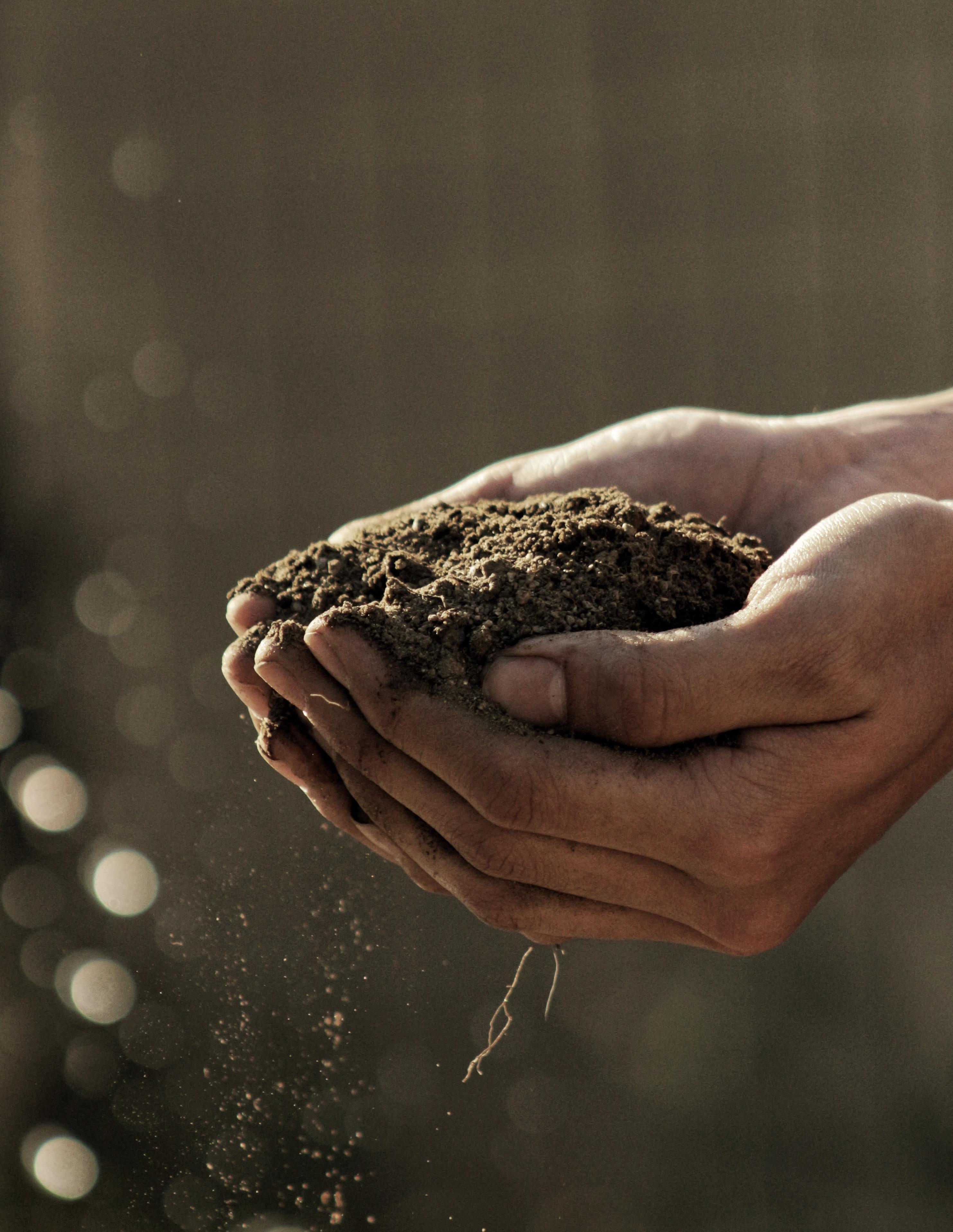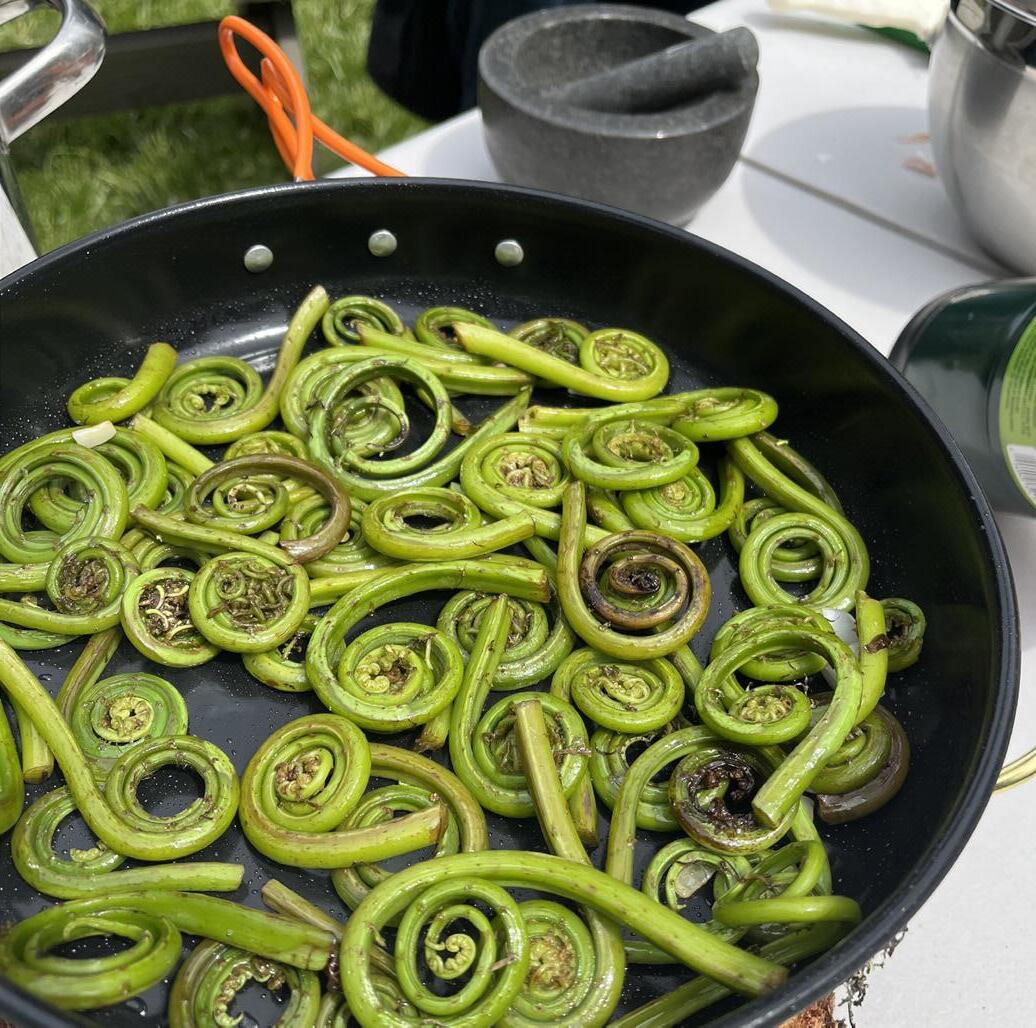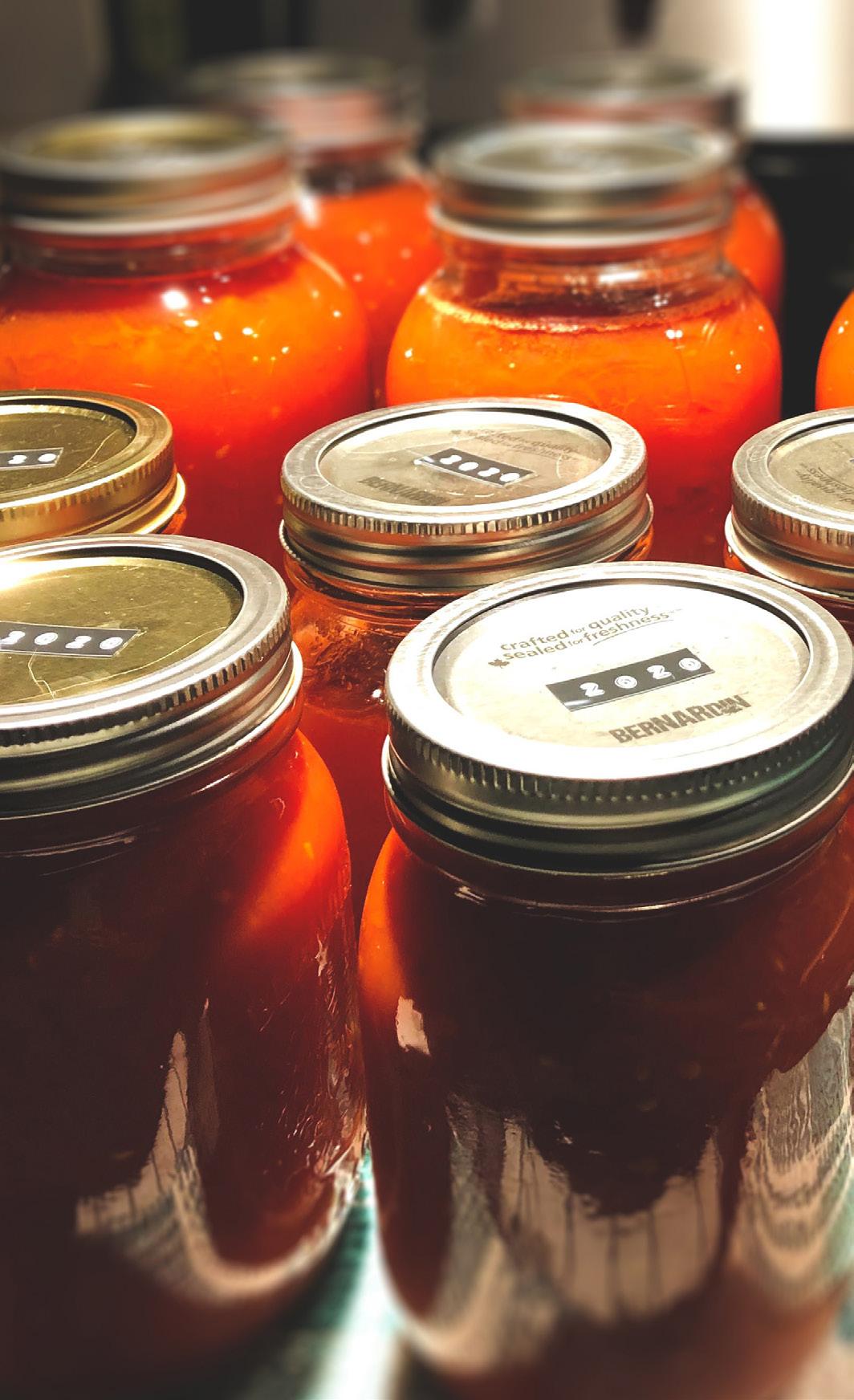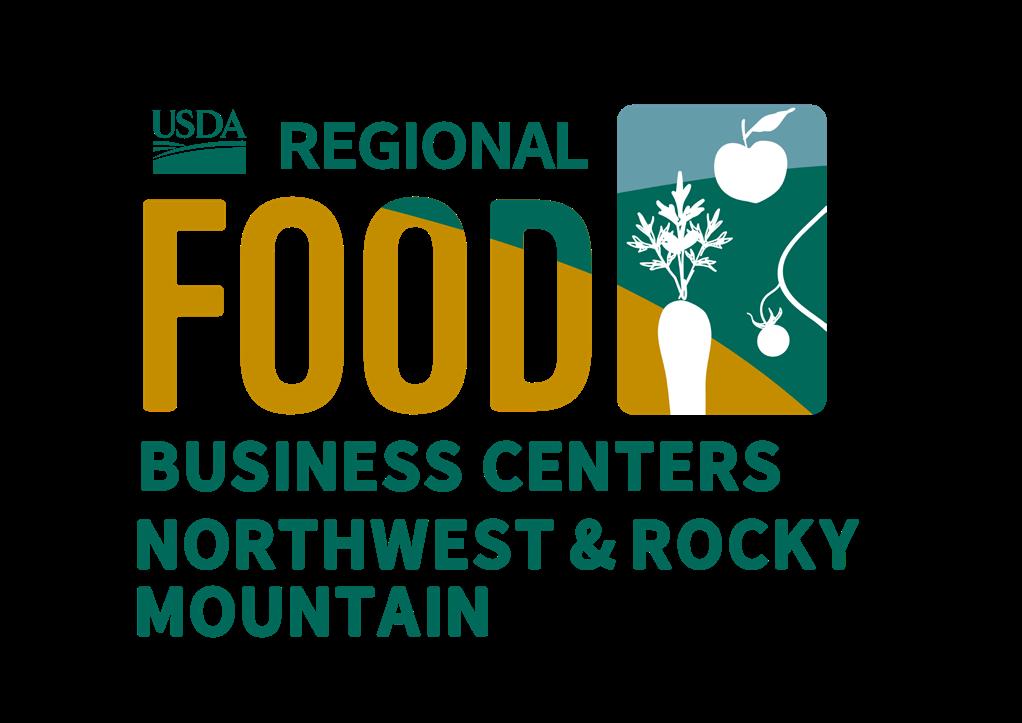NATIVE GROWN + GATHERED



EXECUTIVE SUMMARY
KEY TAKEAWAYS
INTRODUCTION
METHODOLOGY
LIMITATIONS
NATIVE-OWNED BUSINESSES AND ENTREPRENEURS DEMOGRAPHICS
Other Identities Shared
Tribal Affiliations
Business Expansion and Values
Barter and Trade
NEEDS AND OPPORTUNITIES
PARTICIPATION IN USDA PROGRAMS
NEXT STEPS AND OPPORTUNITIES
RECOMMENDATIONS
APPENDIX
The Native Grown and Gathered Assessment Report, prepared by Tahoma Peak Solutions, provides an in-depth analysis of the challenges and opportunities facing Native-owned food and agricultural businesses across the Northwest and Rocky Mountain regions. The report draws on interviews and surveys conducted with 44 Native food producers, identifying key areas for growth, funding needs, and technical support required to strengthen Native food sovereignty.
1. All Native food producers interviewed expressed a desire to grow their business.
2. Producers’ business goals were closely linked to their values. A common objective was expanding to a size that would allow them to continue supporting their communities.
3. Native-owned food and agricultural businesses need targeted funding for essential infrastructure and equipment. Early-stage producers, in particular, face high startup costs and require resources to scale and improve efficiency.
4. 70% of respondents were unaware of available grant opportunities. The USDA’s reimbursement process was viewed as too risky for small-scale producers, deterring them from seeking funding.
6. 62% of Native producers see support for business management and planning as vital to their goals, with tax preparation, bookkeeping, and record-keeping as key needs. Many producers struggle to find service providers familiar with the special needs of food and agricultural businesses.
7. Many producers are working to establish nonprofit entities alongside their for-profit operations to align with their values, adding complexity to their financial management. This underscores the need for targeted training to navigate the challenges of managing multiple entities effectively.
5. Training in website development (74%), digital marketing (59%), and social media management (56%) is needed, including e-commerce platforms that integrate inventory management systems and, where feasible, support SNAP payments.
Native Grown and Gathered is a critical initiative to enhance the resilience and sustainability of Native food systems across the Northwest and Rocky Mountain regions. It operates on the understanding that food sovereignty is essential to the health, culture, and economic well-being of Native communities. The project aims to identify challenges, funding gaps, and opportunities for technical assistance to empower Native food systems. This is achieved through conducting interviews and surveys with Native-owned food businesses, producers, and entrepreneurs.
Native Grown and Gathered began as a regional initiative in Washington State through a collaboration between Feed Seven Generations, City, and Tahoma Peak Solutions. This initial effort focused on connecting Native food producers with Native consumers, strengthening local food systems, and addressing funding and technical assistance gaps for Nativeowned food businesses. The success of the Washington State pilot laid the groundwork for expansion into Idaho, Oregon, Montana, Colorado, and Wyoming through a strategic partnership with the Northwest and Rocky Mountain Regional Food Business Center (NWRM RFBC). The expanded reach allowed the project to address the unique needs of Native food producers across these states while continuing to support and strengthen Native food sovereignty throughout the region.
This report provides a comprehensive overview of the project’s findings to
guide current efforts and inform future initiatives to better support Native food sovereignty and economic empowerment. By gathering insights directly from Native food producers, the project seeks to foster meaningful connections among individuals and organizations involved in Native food systems. This process amplifies the voices of Native producers, who have long been stewards of their lands and foodways, by sharing their stories highlighting the rich cultural heritage and traditional practices tied to Native foods. These connections are vital for building a robust network that supports collaboration, resource sharing, and collective problem-solving within the community.
By understanding the unique challenges and opportunities faced by Native food businesses, the project aims to identify areas where targeted support, such as funding and technical assistance, can make a significant impact. This approach helps create a more resilient and self-sufficient food system that honors traditional knowledge and practices while adapting to modern economic realities.

The project employed an inclusive and participatory methodology, centering the voices and experiences of Native food producers. The interview protocols and survey development was adapted and expanded upon from a previous assessment developed for Washington State Native food and farm businesses in partnership with Feed Seven Generations and King County.
The key steps in the project’s approach include:
The project began by recruiting a diverse group of Native food producers, entrepreneurs, and businesses across the Northwest and Rocky Mountain regions. Snowball sampling was used to leverage established partnerships with Native-led organizations. A recruitment flier was shared with other Native-led organizations to distribute across their networks. Interviewees also referred other producers in their networks to the project, which built trust and rapport within the producers’ networks. Finally, the project team conducted online searches of Native-owned business websites and social media accounts, state by state. Once producers were identified, staff contacted directly via email and phone. The interview process allowed producers to connect on their own terms and availability with flexible interview scheduling, over the phone or on Zoom.

The primary data collection method involved in-depth, semi-structured interviews with Native food producers ranging from 45 minutes to 1 hour. These interviews explored business operations, cultural practices, challenges in accessing funding and technical assistance, and opportunities for growth and collaboration. Producers were asked to consent to recording the interview and were free to skip questions or respond in ways that honored their cultural practices. Openended questions encouraged participants to share their experiences in their own words, recognizing listening as a gift that fosters relationship-building and respects their stories. Alternatively, participants could fill out an assessment through an online survey in lieu of the interview if their time was limited. Those who participated in an interview were given a $100 honorarium for their time.
Data from interviews was analyzed using both qualitative and quantitative methods. The qualitative analysis thoroughly examined short-answer responses in the interview transcripts using Otter, a note-taking and transcription tool. Key themes were extracted and assigned codes to highlight insights from the producers’ stories and experiences, while quantitative data from multiple-choice interview questions were analyzed using Survey Monkey. Using qualitative and quantitative methods, the project honored the lived experiences and insights of Native producers, integrating their voices and unique cultural practices into the research. The mixed-method approach provided a deeper understanding of both the quantitative data and the context behind each response, offering insights that interviews could capture more effectively than surveys alone.
The final step was compiling the findings into a comprehensive report, including key themes and actionable recommendations. This report is intended for Native food producers, community organizations, policymakers, and funding bodies to guide future support efforts and catalyze initiatives to strengthen Native food systems.
When addressing the diversity of businesses, geography, tribal affiliations, and cultural practices in such a broad region as the Northwest and Rocky Mountains, it’s essential to honor the uniqueness of each


community while also recognizing the common threads that connect them. This region’s Native-owned food and agricultural businesses span diverse landscapes- from coastal to mountainous terrains- reflecting a rich tapestry of tribal affiliations and cultural practices. While these businesses share common needs and opportunities, such as access to markets, capital, and resources, it is important to recognize the distinct and evolving needs of each Nativeowned business and tribal enterprise. These enterprises operate in environments with varying climates, natural resources, and cultural contexts, shaping their food production, land stewardship, and economic development approaches. Acknowledging these differences is critical to offering better
support and uplifting the diverse range of Native-owned businesses contributing to the resilience and sustainability of food systems across this vast region.
The sample size was small, with 44 respondents across six states, and does not fully capture the region’s diversity and scale. This highlights the need for continued outreach, especially to smaller producers not affiliated with larger ranches or receiving technical assistance and funding. Engaging these underrepresented groups will provide a more accurate and comprehensive understanding of the needs and contributions of Native-owned food and agricultural businesses.
Throughout this report, the term “producers” broadly refers to Native American entrepreneurs, business owners, and tribal enterprises involved in food and agricultural ventures that participated in the Native Grown and Gathered assessment. The terms Native-owned business, Native producer, and Native entrepreneurs refer specifically to Native American food and agricultural businesses or Tribal enterprises. The terms “producers,” “entrepreneurs,” and “Nativeowned food and agricultural businesses” are used interchangeably to describe individuals and enterprises engaged in harvesting, producing, and processing food and medicine within their communities.
The assessment encompasses a diverse range of products and services that reflect the rich and varied landscape of Native food production and entrepreneurship. These include mixed vegetable farms, gardens, U-pick farms, bison and cattle ranches, egg cooperatives, and poultry farms. It also covers seafood operations, such as salmon and sturgeon fishers and seafood buyers, herbalists, and apothecaries specializing in natural remedies. Additionally, it includes personal chefs, catering businesses, prepared meal services, food trucks, trading posts, and caterers.
When asked what they are most proud of about their businesses, producers shared reflections rooted in their cultural and community values. They spoke about their businesses inspiring Native youth, significantly impacting their communities, and contributing to economic development. These entrepreneurs create safe and welcoming spaces that reflect their culture, allowing people to see themselves genuinely represented. They also use their businesses as platforms to advance food sovereignty efforts and promote traditional foods, treating food not only as sustenance but also as an art form that tells the story of their people.
Forty-four businesses participated in the assessment, distributed as follows:
NORTHWEST:
Idaho - 1
Oregon - 15
Washington - 16
ROCKY MOUNTAINS:
Colorado - 3
Montana - 5
Wyoming - 4
Participants were asked the question, “Which of the following do you identify as?” Respondents could select multiple options to self-identify based on gender, age, racial identity, and tribal affiliation within their communities.
Respondents primarily identified with the following roles and identities listed:
Female (61.76%)
A significant number of participants identified as female, highlighting the key role Native women entrepreneurs play in leading food sovereignty efforts through their businesses.
Multiple Generational Food Producer (32.35%)
A large portion identified as being involved in food production across multiple generations, indicating a strong tradition of food production within certain families.
Latine and Indigenous (11.76%)
A notable number of respondents identified as Latine and Indigenous, reflecting the presence of mixed-race identities in food production.
“… what we do as a people is art. Whether it’s our food, whether it’s our products, our clothes, our songs… food sovereignty could be that pathway… it feeds the heart, it feeds the soul, it feeds the arc that is Indigenous made..”
DARCY FISHER KEEPERS OF THE SEASON
Respondents also shared other identities, including Two-Spirit, Male, Young Farmer, Black and Indigenous, Asian and Indigenous, Elder, Disabled, and Veteran. An important identity that emerged was that of entrepreneurs who are multi-generational food producers. During interviews, respondents often identified as first-generation food producers if their family members had produced food for their community but did not own a formal business.
A first-generation food producer refers to someone who is the first in their family to engage in formal food production regardless of whether there is an agricultural business. Follow-up questions revealed that many of these “first generation” producers came from families involved in food production for their family or community without establishing formal food or agricultural businesses. This suggests a potential misinterpretation of the term “first generation,” indicating the number of multi-generational food producers is likely higher than reported. It is common for Indigenous people to engage in food production through hunting, fishing, and gathering as part of their traditional practices. Food is vital in Indigenous cultures’ community events, ceremonies, and celebrations. Engaging in food production for these purposes is a common practice woven into daily life, so many respondents might not view it as food production.
Respondents identified with a variety of roles as food producers within their community. Here are the key roles identified:
FARMER (54%)
The most common role, with over half of the respondents identifying they were involved in farming.
GARDENER (46%):
A significant number are engaged in gardening, reflecting a strong interest in growing food and maintaining gardens.
HERBALIST/MEDICINE MAKER (36%)
Many respondents produce medicine and herbs through businesses such as apothecaries.
Other roles identified include Preserver (33%), Rancher (31%), Community Harvester (21%), Butcher/Meat Processor (21%), Fisher/Diver (18%), Hunter (13%), and Chef (7%). One respondent identified as a Native grocer, which could reflect the prevalence of food deserts within many tribal communities and on reservations or a limitation in sample size. The data from participating producers highlights a strong involvement in foodrelated activities and traditional practices, with farming, gardening, and herb/ medicine making standing out. This could be due to the visibility of these types of food and agricultural businesses, particularly those marketed online, which was one key
outreach method. The assessment does not fully reflect the significance of hunting, fishing, or gathering, which are essential for many people’s sustenance and businesses but were not the primary role of producers included in the assessment. Climate change may also influence this shift, as traditional practices like fishing, hunting, and gathering are being affected. Emphasizing the need for more research to explore how farming may become a prevalent business model for native producers in response to declining fish runs and availability of traditional foods.
Many rural producers on reservations identified as “gardeners” based on the amount of land they were farming, even though they met the USDA’s definition of a farm. Producers often downplayed their operations’ scale and hesitated to call themselves “farmers.” The term “gardener” may have felt safer and more comfortable. One limitation of this question was that a clear definition of a farm was not provided to interviewees. The USDA defines a farm as a “place that produces and sells, or could potentially sell, $1,000 or more of agricultural products annually.”
Producers who participated in the assessment represent the diversity of Nativeowned food and agricultural businesses in the Northwest and Rocky Mountain regions. These businesses are based in Washington, Oregon, Idaho, Colorado, Montana, and Wyoming with the following tribal affiliations: Blackfeet Tribe, Cherokee Tribe, Chimariko, Choctaw Nation of Oklahoma, Chukchansi, Colville Confederated Tribes-Arrow Lake, Confederated Tribes of Siletz, Confederated Tribes of the Grand Ronde, Confederated Tribes of the Umatilla Indian Reservation,
Confederated Tribes of Warm Springs, Cow Creek Band of Umpqua Tribe of Indians, Diné, Eastern Cherokee, Eastern Shoshone, Hopi, Karuk, Kootenai, Ktunaxa, Lower Brule Sioux Tribe, Lummi Nation, Makah, Mohawk, Nez Perce, Northern Arapaho, Pen d’orielle, Pit River Nation, Salish, Southern Ute, Tsimshian First Nation, Tulalip, Turtle Mountain Chippewa, Yakama Nation, and Yurok. Many of these producers hold multiple tribal affiliations and are enrolled in tribes located in other regions, particularly Southwest tribes, further demonstrating the interconnectedness of food sovereignty efforts across regions. It also could be attributed to the lasting impacts of the Relocation Act of 1956, which moved many young Indigenous people away from their reservations to urban areas with the promise of vocational training and jobs that never materialized. Many remained in these urban areas, contributing to the high numbers of Indigenous people living in urban areas

All interviewees expressed a desire to expand their businesses, with specific goals depending on their current access to infrastructure and the type of food or agricultural operation. Key areas of growth include:
Developing New Value-Added Products
Items such as bison meat, jerky, freezedried goods, canned fish, and other items to increase profitability and extend shelf life.
Vehicles with cold storage to improve transportation logistics and reach more community members.
Contracts with institutions such as hunger relief organizations, with some interest in contracting with schools and hospitals to provide a steady market for their products.
Developing online platforms for online sales and inventory management to reach broader markets.
Constructing commercial kitchens and storage facilities, particularly for operations on reservations.
Establish new restaurants or storefronts to enhance retail presence and brand recognition.
Creating nonprofit entities to access grants and support community-driven initiatives that strengthen food sovereignty efforts.
These diverse strategies reflect producers’ deep ambition to grow their businesses while also enriching their communities by increasing access to locally produced, traditional foods. Their success is crucial for the ongoing development of Native-owned food and agricultural businesses and plays a vital role in advancing food sovereignty. When discussing expansion plans, producers consistently linked their goals to their unique stories and values, with a shared emphasis on growing to a size that allows them to continue supporting their communities.

“My goal is to create something that all four tribes can be happy about and that we’re doing something good for the people. It’s not always about money, it’s about eating really good food, enjoying the company with that food and giving it as a gift.”
Producers were asked about bartering or trading for food products. Bartering typically occurs within established relationships, where trade is common among families, friends, and reservation communities, particularly with traditional food items. Trading often happens between food vendors at markets, with exchanges based on mutual relationships. For example, one producer developed a line of preserved vegetables and traditional plant medicines specifically for trade with other food producers. Another organized a vendor fair for Indigenous producers exclusively for bartering, with no money exchanged. These practices highlight the strong network of relationships and the cultural significance of gift-giving and trading in traditional foodways.
The assessment also underscored a strong cultural value among producers in supporting their communities, especially elders and those in need. When asked about bartering and trading, many producers highlighted their practice of discounting or gifting items to elders or community members facing financial difficulties. This reflects Nativeowned food businesses’ commitment to sustain their operations and nurture and uplift their communities.
“If I see somebody that’s in need, I’ll just donate it. We have elders, and some of them … don’t get food, so we just donate it to them.”
BRIGETTE SCOTT-MCCONVILLE OWNER OF SALMON KING FISHERIES

In the “Needs and Opportunities” section of the assessment, producers were asked to identify areas where technical assistance, training, and USDA funding could best support their businesses. Producers provided insights on necessary information and training for achieving their expansion goals and their concerns about the future, support needed to foster confidence, and infrastructure and equipment needs. They also shared experiences with USDA grant programs. The qualitative questions were designed to elevate pressing needs and identify supportive strategies.
The assessment identified several crucial training topics for supporting Native producers’ business goals. These targeted training areas are designed to enhance producers’ capabilities, aligning with their aspirations for growth and sustainability. Those topics include:
Training on operating commercial kitchen regulations and securing funding to develop on-farm or mobile commercial kitchens. On-site storage was especially important for producers on reservations with limited access to commissary facilities or facing long travel distances to access kitchen and storage space to process products.
includes creating e-commerce platforms that integrate with inventory management and, where possible, SNAP payments.
importance of targeted training and support to ensure these businesses can thrive.
Assistance with hiring and human resources to provide producers with the training and knowledge needed to effectively manage staff and meet labor regulations.
60% percent of producers expressed interest in training to establish direct or forward contracts with organizations like hospitals, hunger relief programs, restaurants, prisons, and school lunch programs. This training would enable them to secure stable, longterm sales channels.
Training in prospecting and proposal development for USDA and other relevant grants. There was a common misconception among producers that grants are only available to nonprofit entities or Tribal governments, which discouraged them from pursuing opportunities open to business owners.
Training in website development (74%), digital marketing (59%), and social media management (56%) was a theme. This
Producers expressed concerns that training sessions and seminars might not be efficient, especially if they interfere with daily operations and production. They strongly preferred ‘learning by doing,’ favoring practical, hands-on experiences integrating new skills into their workflow with minimal downtime. One producer shared that training sessions that require high upfront costs and time away from their business means they can’t spend a day making products and handling on-theground operations, which does not meet their needs. However, training that includes networking or opportunities like product soft launches or launch parties could be more beneficial and aligned with their entrepreneurial goals.
The Native Grown and Gathered assessment revealed a significant demand among Native producers, with 62% responding that support for business management and planning is important to their business goals. A key need identified was assistance in tax preparation, bookkeeping, and record keeping.
Producers often struggle to find service providers with expertise in tax preparation tailored to food and agricultural businesses with unique financial and regulatory requirements. This gap underscores the
Many producers are also in the early stages of establishing nonprofit entities to complement their for-profit operations, further complicating their financial management needs. Navigating the filing process for tax-exempt status (such as completing the 1023-EZ paperwork) and managing tax obligations across multiple entities can be challenging. Producers need assistance in understanding these processes and integrating financial practices across different business models. Addressing these needs through comprehensive training and access to knowledgeable service providers is crucial to helping Native producers build sustainable, resilient businesses that effectively support their communities.

Producers were asked to detail their immediate equipment and infrastructure needs and estimated costs to identify the investments required for expanding their operations and meet their expansion goals. The responses highlighted a significant demand for diverse equipment and infrastructure critical for scaling up their businesses. This information is crucial for developing support programs that directly address producers’ practical needs, enabling more efficient transitions to expanded operations and improving productivity. The assessment identified key infrastructure and equipment needs, along with average cost estimates provided directly by the producers:
Essential for farm production, especially for farms in the early stages of production. The estimated cost is approximately $30,000.
These are needed to transport products to their communities. The estimated cost is approximately $41,000 for refrigeration vehicles.
Essential for on-farm processing. The average cost is $16,000.
Necessary for preserving and storing products, with cold storage systems averaging $15,000.
These are used for additional storage and operations space. The estimated cost is about $12,400.
For establishing or expanding physical retail or processing locations. Costs range from $150,000 to $250,000, depending on location and size. These estimates underscore the significant investment needed to meet the infrastructure and equipment needs of Native-owned food businesses. Supporting producers’ access to funding is essential in empowering these entrepreneurs to expand their operations, foster business growth, and promote food sovereignty within their communities.

The Native Grown and Gathered assessment revealed varying levels of engagement among Native producers with USDA grants, loans, and training programs. In 2024, only four producers in the assessment reported having applied for a USDA grant or loan. The most common programs included the ValueAdded Producer Grant (VAPG) under Rural Development, the Environmental Quality Incentives Program (EQIP), and the High Tunnel Initiative under the Natural Resources Conservation Service (NRCS), and farm loans through the Farm Service Agency (FSA). Despite the valuable financial support these programs offer, low participation rates highlight significant challenges that must be addressed to increase access and benefit by Native producers.
One of the most significant barriers is a lack of awareness about relevant USDA grant programs. A staggering 70% of respondents were unaware of available grant opportunities, limiting their ability to access crucial funding and resources that could enhance their businesses. Additionally, some producers reported experiencing discrimination at USDA offices, further discouraging them from seeking support. This sentiment is compounded by the perception by some respondents that the USDA is opposed to food sovereignty. Another producer expressed frustration with USDA program applications, emphasizing quantitative data such as gross sales and employee numbers while overlooking the core values central to Indigenous communities, like land stewardship, community well-being,
and sustainability. This disconnect between Indigenous values and USDA criteria contributes to the reluctance of some producers to engage with these programs.
Another major hurdle is the USDA’s grant reimbursement process, which requires producers to cover costs upfront and then seek reimbursement. This process is viewed by many as too risky and financially burdensome for many small-scale producers operating on tight margins, deterring them from potential funding that could significantly impact their operations.
Many producers, particularly those in the food and beverage industry, have not considered USDA programs as a potential financial resource. This stems from a belief that USDA grants and loans are primarily designed for nonprofits or tribal governments, not for for-profit food businesses. One producer questioned how USDA grants could be relevant to their food and beverage operation, highlighting a significant gap in awareness. Increasing awareness and education about USDA eligibility for food and beverage businesses could open up new funding opportunities for these entrepreneurs.
Despite these barriers, the assessment identified potential solutions to increase engagement with USDA programs. Producers indicated that they would be more likely to apply for grants and loans if they were better informed about the available opportunities and had access to technical assistance.
Specifically, support in areas such as bookkeeping and gross sales tracking— especially for cash-only businesses—would enhance their grant readiness. Furthermore, producers expressed a strong interest in grant writing training, which would empower them to secure funding more effectively. Addressing these needs presents a clear opportunity to bridge the gap between Native producers and USDA resources, ultimately strengthening the economic sustainability of Native-owned businesses and advancing food sovereignty efforts.

The recommendations in this section build upon the insights from the Native Grown and Gathered Washington Report (see appendix), expanding on the findings from that report, which closely align with those of this assessment. This continuity underscores the persistent needs and opportunities identified across both assessments, providing a basis for refining strategies to better support Native food and agricultural businesses. The following recommendations are designed to leverage past insights while addressing the evolving challenges and aspirations of Native producers, ensuring the support provided remains both relevant and impactful.
Create a trade show specifically for Native food and farm entrepreneurs with low barriers to entry, providing a platform for visibility and networking. This event could feature workshops offering essential skills and opportunities to connect directly with potential buyers and like-minded entrepreneurs. Participants could also receive support for further certifications or other necessary business advancements. This gathering would be an invaluable opportunity to elevate Native businesses and foster a supportive community centered on shared growth and success.
Targeted funding is urgently needed to acquire essential infrastructure and equipment for Native-owned food and agricultural businesses. Many producers, particularly those in the early stages of their enterprises, face substantial startup costs and require specific equipment to scale production and improve efficiency. Investments should prioritize items like high tunnels, tractors, and brush hogs, which are crucial for expanding operational capacity. Funding should also be allocated to developing onfarm kitchens and storage facilities to support value-added production, further enabling producers to enhance product offerings and market competitiveness. Providing dedicated financial support for these needs will significantly empower Native producers to achieve sustainable growth and economic resilience.
Create a directory to increase support and visibility for Native-owned food businesses and tribal enterprises in the Northwest and Rocky Mountain region. This directory would include all businesses that participated in the assessment and invite other Native producers in the region to join. It would also include information on local and regional funding opportunities and technical assistance providers. This resource would significantly
boost visibility, facilitate networking, and foster relationship-building, supporting the growth and sustainability of Native-owned businesses and amplifying their community impact.
Building a movement that offers comprehensive support is essential for Native-owned food businesses’ growth and long-term viability. This movement should encompass a robust support network, foster trust between grant-making entities and Native producers, and establish dedicated resource hubs across the region. These hubs would offer tailored legal assistance, marketing strategies, and financial planning specifically designed for Native food enterprises. Advocacy efforts are also critical to protect and advance these businesses’ interests in policy arenas. Networking and mentorship programs should connect Native business owners with industry experts and peers, creating a vibrant community of shared resources and experiences. The movement should promote long-term partnerships between government entities, academic institutions, nonprofits, and Native entrepreneurs to ensure ongoing support and innovation. A holistic approach will empower Native food businesses to flourish, integrating their goals into a framework that extends well beyond initial investments like food expos and equipment purchases.
Native Grown and Gathered is a networkbased initiative focused on understanding the needs of Native food producers and consumers directly through comprehensive research. We are committed to leveraging the findings from this assessment to catalyze food sovereignty efforts and strengthen Native food systems nationwide. Our goal is simple: we want Native people to eat food grown, harvested, made, and produced by other Native people. By conducting intentional, targeted research, this project highlights the strengths and opportunities within Native-owned food businesses while identifying critical gaps in funding and technical assistance. By engaging directly with regional producers, we have captured valuable insights into the dynamics of Native food production and access.
Throughout the assessment, many producers expressed a strong need for more robust technical support and better access to funding opportunities. Many also expressed a clear need for more outreach and support for small Native-owned food and agricultural businesses in the Northwest and Rocky Mountain regions. Even those who could not participate in the assessment strongly desired technical assistance and funding support. The enthusiasm and willingness to share their stories and traditional practices were truly inspiring and underscored the importance of relationships in building strong, resilient food systems. Moving forward, it is crucial to channel more investments into for-profit and
nonprofit entities dedicated to Native food sovereignty efforts. Such investments will support economic development and reinforce Native-owned businesses’ vital roles in their communities and the broader food industry. We are committed to using the findings from this project to catalyze food sovereignty efforts and enhance Native food systems across the nation.

NATIVE GROWN & GATHERED 1.0 DIGITAL RESOURCE GUIDEWASHINGTON STATE

NATIVE GROWN & GATHERED WASHINGTON REPORT

NATIVE GROWN & GATHERED NEEDS AND OPPORTUNTIES ASESSMENT QUESTIONS


